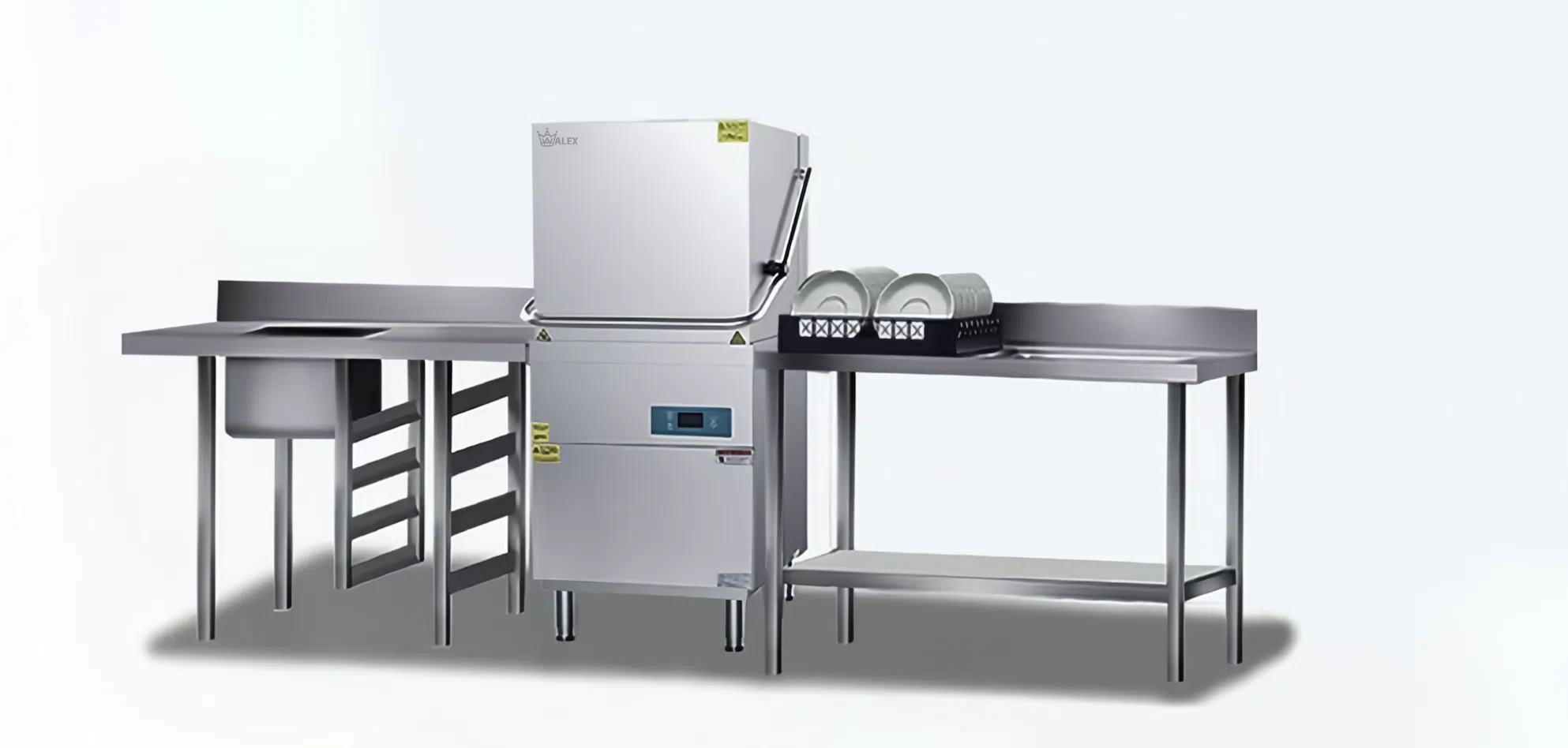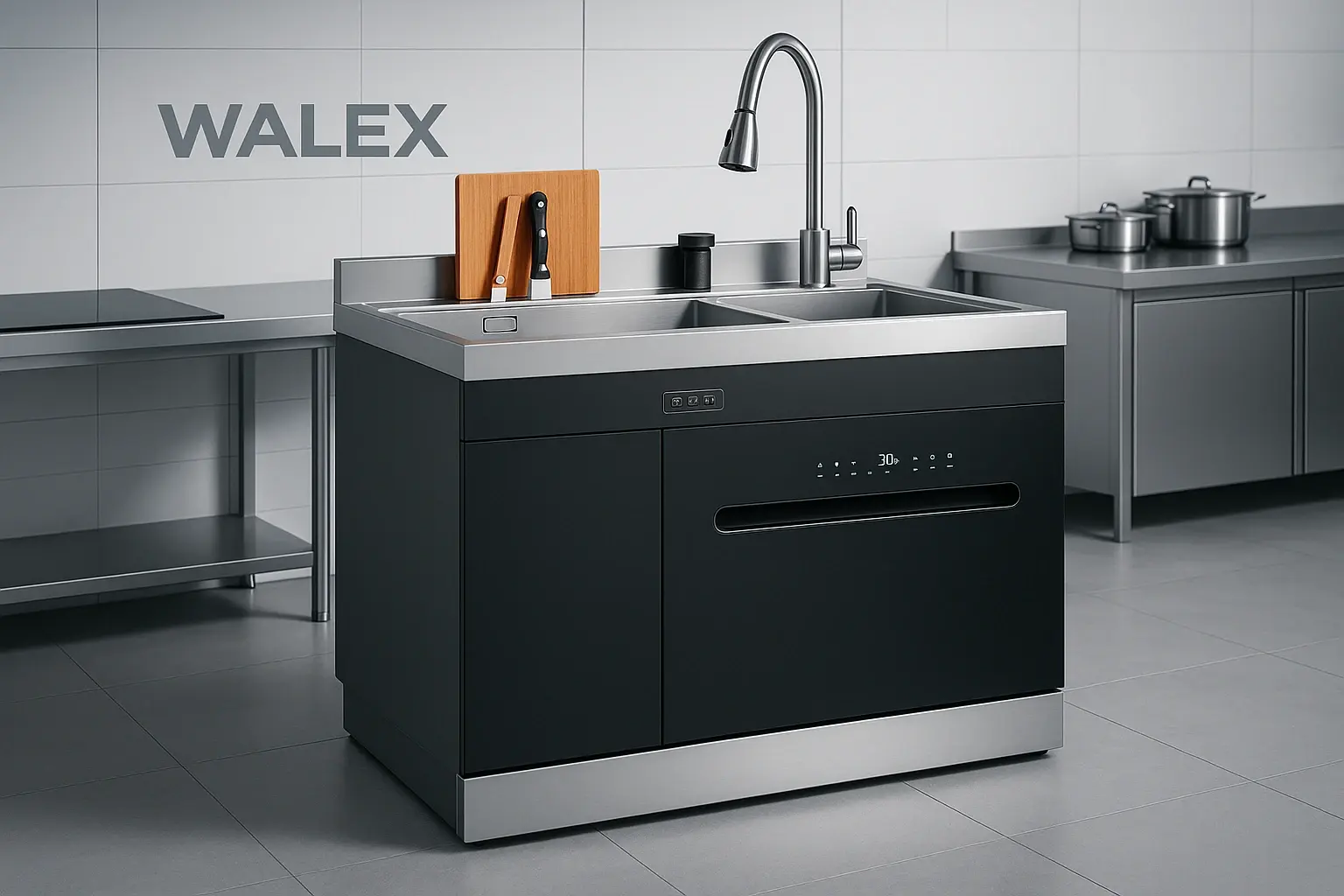The Shift from Manual Labor to Automation
As society and the economy develop, the operation of machines has gradually replaced manual labor to make our lives more convenient. Today, even dishwashing is no exception. Manual dishwashing methods can sometimes be rough and inconsistent, making it difficult to achieve a thorough clean and failing to meet proper hygiene standards. This crude approach does not effectively sanitize tableware, and unclean dishes can be detrimental to human health.
The Advantages of Machine Washing
Using a dishwasher to clean tableware offers strong decontamination power and thorough disinfection, capable of completely removing surface residues and grease. This ensures a higher standard of cleanliness, which is beneficial for human health.
What is a Commercial Dishwasher?
A commercial dishwasher refers to dishwashing equipment used in commercial settings, distinguishing it from residential models. These are typically found in canteens (such as those in schools, government offices, and factories), hotels (including restaurants, diners, and fast-food outlets), and tableware disinfection companies. They are suitable for washing a wide variety of tableware materials and shapes, including porcelain (bowls, plates, dishes, cups), stainless steel, and melamine.
Enhancing Efficiency and Reducing Costs
Commercial dishwashers significantly improve the efficiency of tableware cleaning. In addition to providing a high degree of cleanliness, they also drastically reduce the use of labor. With manual washing, tableware can typically only be used once per meal, requiring an establishment to stock three to five times the necessary quantity of dishes. Commercial dishwashers not only speed up this process but also ensure that the breakage rate during cleaning is minimized. Furthermore, many models can also dry the tableware, saving numerous steps and leading to substantial cost savings.
Ensuring Quality and Simple Operation
As long as a dishwasher is properly designed and used correctly according to the necessary operating procedures, ensuring consistent cleaning quality is its most fundamental benefit. This reduces the uncertainty associated with the quality of manual washing. The process is straightforward: place the dishes in the dishwasher, turn on the water tap, press the machine’s switch, and the dishwasher will run automatically.
Classifications of Commercial Dishwashers
Commercial dishwashers can be categorized in several ways:
By Appearance and Conveyor System: This includes hood-type dishwashers, tunnel-type dishwashers, conveyor-type (or flight-type) dishwashers, and models with net-belt flat conveyors.
By Place of Use: This includes canteen dishwashers, hotel dishwashers, catering company dishwashers, and dishwashers for central disinfection centers.
By Cleaning Method: Common types are ultrasonic dishwashers, jet-type (also known as spray-type) dishwashers, and vortex-type dishwashers.
By Performance: This classification includes semi-automatic, fully automatic, and fully-featured automatic dishwashers, as well as traditional, energy-saving, and ultra-clean models.
By Function: These can range from simple rinsing machines to integrated spray-and-dry units, all-in-one cleaning systems, and fully automated production lines.


